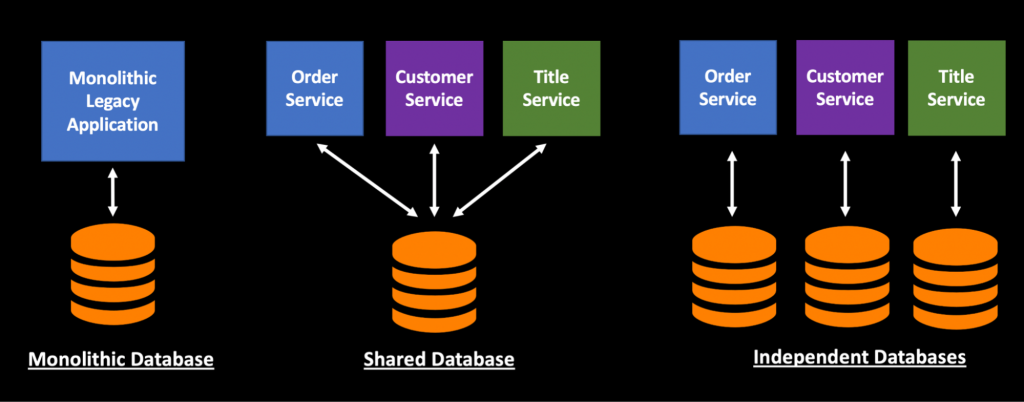DevOps is the combination of people, processes, and tooling that allows you to deliver high-quality software. Today, enterprises are adopting DevOps practices more quickly than ever before, and the DevOps approach to software development is becoming more widely accepted. This is because DevOps provides a collaborative working environment for developers and IT operations teams, allowing them to deliver business features faster. And since automation has eliminated many manual processes, enterprises are deploying business functionalities to production quicker and with more reliability.
However, there is no magical formula for successfully implementing DevOps. In this article, I will explain how DevOps can help you gain a competitive edge. I’ll also dive deep into the top challenges of DevOps adoption.
Driving Factors for DevOps Adoption
As I just mentioned, enterprises are adopting DevOps more quickly than ever before. Here are some of the significant benefits of incorporating DevOps principles into your development workflow:
- Speed to market: DevOps principles help increase your development process efficiency and deliver business values faster.
- Less waste: DevOps helps to automate manual processes and reduce technical debt.
- Improved collaboration between teams: DevOps helps break down barriers and silos and aides in the transition towards a shared responsibility culture.
- Happier teams and customers: Once you embrace DevOps practices, teams will have fewer manual activities to perform and will be able to spend more time on innovation. Having a continuous feedback loop helps to resolve issues faster and increase customer satisfaction.
- Cost optimization: With better management of unplanned work, elimination of manual processes, and an increase in operational efficiency, DevOps helps increase revenue.
Top 5 Challenges in DevOps Adoption
Now that I’ve discussed the benefits of DevOps adoption, let’s take a look at the top five obstacles you’ll face during DevOps implementation.
Resistance to Change
Making the transition from legacy architectures to DevOps practices can be a challenging experience, as it requires a cultural shift and change in mindset. Over a period of time, team members get accustomed to doing a task a certain way, even though it might not be the most efficient method (for example, repetitive manual tasks). Team members may view deviations to their approach as risky—and they may resist. Clearly, replacing existing established methods with new processes is not an easy job.
DevOps requires collaboration and teamwork across your organization, and you cannot have silos between your development and operations teams. You can ask your development teams to understand their application deployment process, but this might not be a welcomed move. Still, it can be a significant step to breaking silos and can help cross-functional teams work together towards a common goal.
To successfully shift to DevOps, you will need to train your teams to understand the benefits of DevOps principles and how they can accelerate business flow while streamlining and automating the development processes. Getting buy-in from both development teams and business stakeholders is critical to the forward momentum needed for DevOps adoption.
2. Adoption of New Tools
In order to solve your DevOps challenges, it’s essential to choose the right technology and tools. DevOps can help you increase development pace and speed to market. But, if different teams within your organization select their own tooling, things can get confusing and complex. The more tools you have, the more training you need for your teams to be proficient in them, so lack of standardized tools can be a real problem.
At the same time, using a plethora of unnecessary tools can be confusing too. For example, I have seen separate development teams using different legacy tools that are neither scalable nor secure, so they’re probably not a good fit for the company’s future automation goals. It’s important to build a collaboration strategy between your development and operations teams so they can evaluate the tools that address your organization’s needs. You also need to ensure that the selected toolset meets your security requirements and can integrate with the current infrastructure.
Are you a tech blogger?
3. Technical Complexity
Technical challenges and lack of skills or resources are two of the main barriers to implementing DevOps and improving software performance. Apart from establishing standardized processes, you need to consider managing multiple environments for testing, controlling configuration drifts, and building automated test suites.
Application downtime due to bad deployments is another factor that can affect business, even after DevOps adoption. In the pursuit of speed to market, you need to ensure that deployment quality is not adversely impacted. When a failure happens in production, the mean time to recovery becomes critical.
For example, if it takes you a whole day to restore your service, the failure will cause system-wide outages and make your customers unhappy. However, if your recovery time is just a few minutes, it might not be such a big concern. Failures are bound to happen, so minimizing recovery time is essential. In such scenarios, a comprehensive set of tests built into the pipeline will give you the confidence to deploy a quick and automated fix in production. To minimize the blast radius, deploy minor releases to production more frequently. This increases your chances of a faster recovery.
4. Migration from Monolithic Architectures to Microservices
A monolithic legacy application accumulates technical debt over time, and the tight coupling between components makes it difficult to transform into modern architecture. Microservices and DevOps work great together and help organizations deliver business values faster. However, decomposing an existing application into granular services is complex and involves operational and infrastructure overheads. Thus, you need to weigh the benefits and cost of making the transition from monolith to microservices.

5. Creation of CI/CD Pipelines for Legacy Components
A continuous integration/continuous deployment (CI/CD) pipeline should be the central component of your DevOps strategy. This allows you to improve your development process by maintaining source control, make smaller code commits with frequent check-ins, have automated tests, and deploy changes to production at a faster pace.

A few notes about continuous integration and continuous deployment:
- Continuous integration: Requires development teams to check in code changes into source control frequently. Every code commit will trigger an automated build that executes unit/integration tests and provides quick feedback.
- Continuous deployment: Automates your release process by deploying the code changes into different environments and preparing for production release.
Integrating CI/CD processes into your existing development workflow is challenging and might be disruptive. Depending upon the state of your legacy applications, there can be a number of roadblocks, such as setting up a centralized build server, adding your application and database code to source control, troubleshooting build issues, adding automated tests to your pipeline, maintaining test environments, and other infrastructure/implementation-related problems.
Modern applications with a microservice architecture are a natural fit while building an automated pipeline. But creating a DevOps pipeline for a legacy system that supports core business processes is challenging and requires a good amount of effort. Most of the time, you need to take a step back in order to understand the current deployment process, identify gaps, and build a roadmap to get to the desired state.
Conclusion
DevOps is a journey of constant improvement, so it’s essential to create a smooth transition plan for your development teams that will result in a successful adoption. DevOps is here to stay, but there is no one-size-fits-all solution. When beginning, make sure to choose architectures that are suited to DevOps. Also, remember that you don’t have to address all the challenges at the same time. Take small steps, and don’t be deterred by initial failures.

